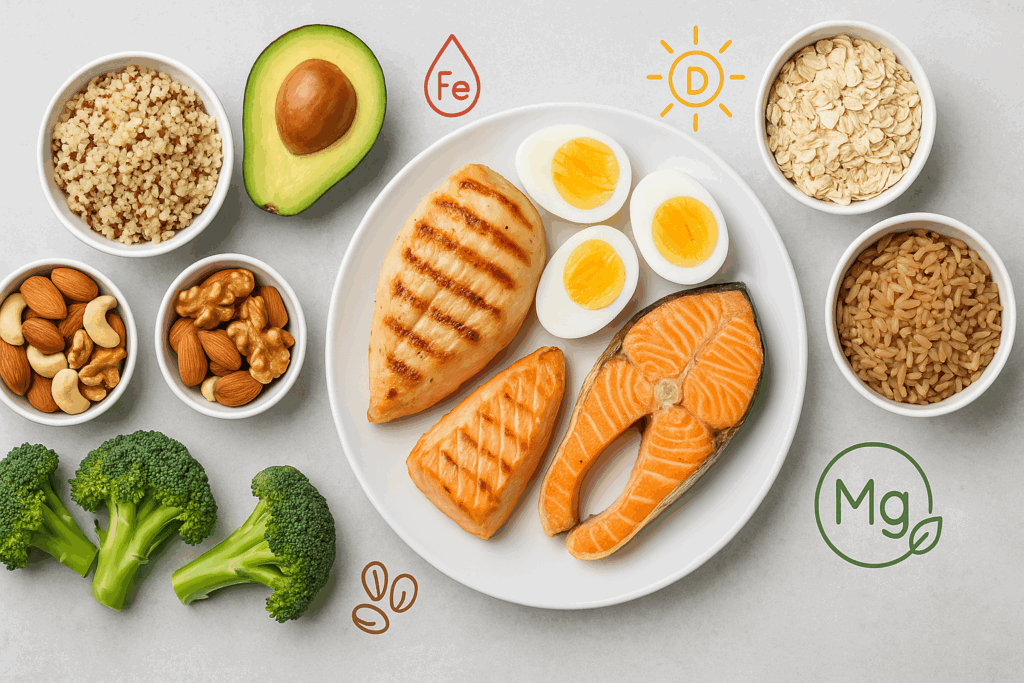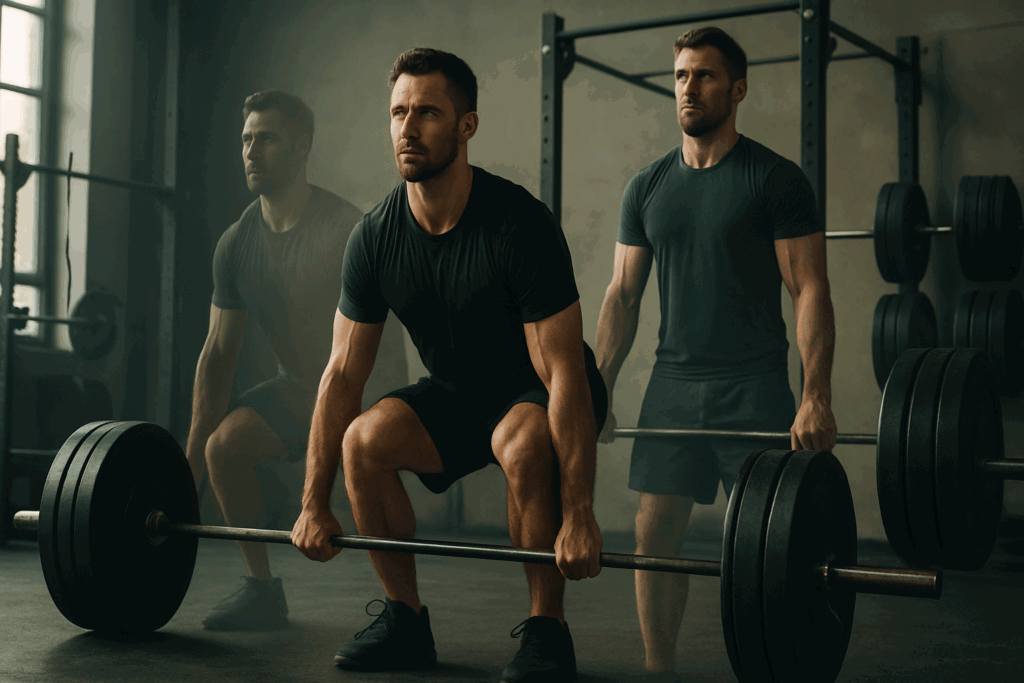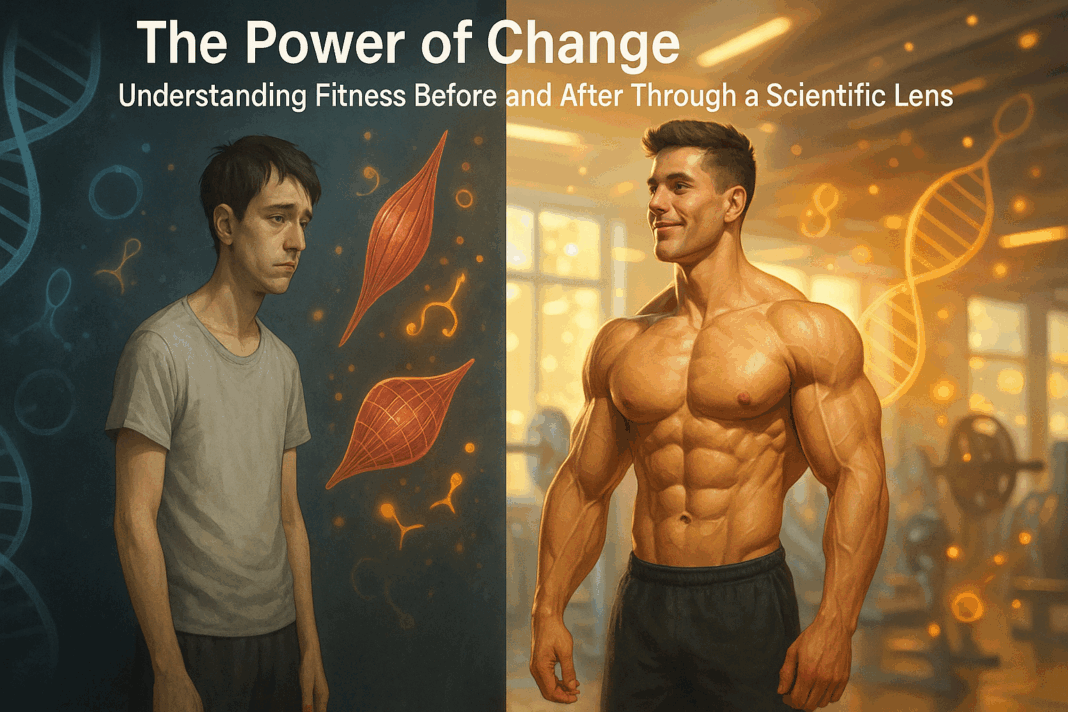The Power of Change: Understanding Fitness Before and After Through a Scientific Lens
Fitness before and after transformations have long captured the fascination of both casual gym-goers and seasoned athletes. These visual and experiential journeys encapsulate not just a change in physique, but a broader story of commitment, discipline, and physiological adaptation. When viewed through the lens of exercise science, these transformations are more than anecdotal—they become case studies in metabolic adaptation, muscle hypertrophy, and strength development. The scientific principles that drive these changes are as compelling as the personal triumphs they accompany.
While social media has popularized these transformations with inspiring images and personal anecdotes, the underlying mechanisms are deeply rooted in evidence-based strength training strategies. Whether it’s a dramatic gym transformation or a subtle but steady improvement over time, each result reflects the application of progressive overload, proper nutrition, and consistent recovery. For those pursuing a body transformation before and after female-specific goals, or for anyone embarking on a broader muscle transformation journey, the science remains a guiding force.
This article aims to demystify those impressive fitness before and after results by delving into the physiology of muscle growth, the hormonal responses that accompany resistance training, and the behavioral shifts required to sustain long-term change. By exploring real-world examples and blending them with empirical research, readers will gain not only inspiration but also a deeper understanding of how these changes occur and how to apply the same principles to their own fitness goals.
You may also like: The Ultimate Hypertrophy Workout Program for Building Strength and Size

Muscle Growth Demystified: How Strength Training Sparks Transformation
The process of muscle transformation begins with a fundamental biological response: hypertrophy. Muscle hypertrophy refers to the increase in muscle fiber size that occurs when the muscle is exposed to mechanical stress beyond its normal workload. This stimulus, most often achieved through resistance training, triggers a cascade of events at the cellular level, including muscle fiber microtears and subsequent repair. As the body repairs these microtears, it lays down new tissue, leading to an increase in muscle size and strength.
Contrary to common misconceptions, hypertrophy doesn’t happen overnight. It is the result of consistent, progressive training that adheres to principles such as intensity, volume, and frequency. High-volume training that targets both type I and type II muscle fibers can lead to more comprehensive muscle development. Furthermore, the role of eccentric contractions—where the muscle lengthens under tension—has been highlighted as especially effective for stimulating growth.
Hormonal responses are another critical component in this process. Resistance training elevates levels of anabolic hormones such as testosterone, growth hormone, and insulin-like growth factor-1 (IGF-1), all of which play significant roles in tissue repair and regeneration. While men typically have higher baseline levels of testosterone, women can achieve remarkable woman body transformation before and after results through training regimens that optimize growth hormone and IGF-1 responses. Thus, while the hormonal profiles may differ, the potential for dramatic transformation remains high across genders.

Nutrition as the Cornerstone: Fueling the Muscle Transformation Journey
No fitness before and after story is complete without addressing the crucial role of nutrition. Proper dietary support is not merely a complement to strength training—it is a central pillar. For muscles to grow, they require a consistent supply of amino acids, the building blocks of protein. Without sufficient protein intake, even the most rigorous training program will yield suboptimal results. Research consistently recommends a daily protein intake of 1.6 to 2.2 grams per kilogram of body weight for those engaged in regular resistance training.
Carbohydrates, often misunderstood in the fitness community, play a vital role in energy production. Muscle contractions during intense workouts rely heavily on glycogen, which is stored in the muscles and liver. Depleting glycogen stores without replenishment can impair performance and recovery. A balanced intake of complex carbohydrates such as oats, brown rice, and quinoa ensures that the body has sufficient fuel for both immediate energy needs and post-exercise recovery.
Fats, too, serve a purpose. Essential fatty acids contribute to hormone production, particularly testosterone and estrogen, which influence muscle protein synthesis. Moreover, micronutrients such as vitamin D, magnesium, and zinc are critical for maintaining metabolic functions, supporting immune health, and promoting optimal recovery. For those undergoing a woman body transformation before and after experience, attention to iron levels is particularly important due to the demands of menstruation and increased training stress.

Training Principles That Drive Gym Transformation Success
Effective gym transformations are the result of intelligent program design rather than random workouts. At the core of every successful muscle-building routine is the principle of progressive overload—the practice of gradually increasing the demands placed on the body during training. This can be achieved by adding more weight, increasing repetitions, shortening rest intervals, or manipulating tempo. The key is to challenge the muscles in a way that promotes adaptation without inducing overtraining.
Periodization, the strategic variation of training variables over time, is another powerful tool in the transformation toolkit. Linear periodization progresses from lower-intensity, higher-volume phases to higher-intensity, lower-volume phases. Undulating periodization varies intensity and volume within a single week, offering more flexibility and responsiveness to the individual’s performance and recovery. Both approaches have been shown to produce significant gains in muscle strength and size.

Exercise selection is equally critical. Compound movements such as squats, deadlifts, bench presses, and rows engage multiple muscle groups and facilitate greater hormonal responses. Accessory movements, while less demanding, help correct imbalances and refine muscle definition. A well-rounded training plan incorporates both types of exercises in a balanced manner. For those documenting their gym transformation journey, consistency in compound lifts often marks the most visible improvements over time.

Frequently Asked Questions: Real-World Insights into Fitness Before and After Transformations
What are the most overlooked factors in a successful gym transformation?
Beyond training intensity and diet consistency, one of the most overlooked elements of a successful gym transformation is sleep quality. Sleep plays a critical role in muscle repair, hormone regulation, and metabolic health. Individuals aiming for noticeable fitness before and after changes often underestimate how insufficient sleep can blunt progress, impair recovery, and increase the likelihood of injury. Another overlooked factor is hydration, which directly affects performance, recovery, and nutrient transport. Lastly, mobility work is frequently neglected, yet it supports joint health and movement efficiency, reducing the risk of overuse injuries.
How can someone maintain motivation during a long-term muscle transformation?
Maintaining motivation over the long haul requires more than just willpower. Setting tiered goals—such as performance benchmarks, body composition milestones, and consistency targets—helps provide a sense of progression. Mental visualization techniques, such as imagining the end state of your fitness before and after journey, can reinforce purpose. Additionally, keeping a detailed training journal not only tracks progress but also cultivates a sense of accountability. Community support, whether through online fitness forums or workout partners, offers emotional encouragement and fresh inspiration.
Are there unique nutritional strategies that support body transformation before and after female journeys?
Yes, several gender-specific nutritional considerations can optimize body transformation before and after female outcomes. For example, women often benefit from paying closer attention to iron, magnesium, and vitamin B12 levels, especially if they experience menstrual irregularities or fatigue during high-intensity phases. Cycle-based eating—adapting macronutrient ratios according to menstrual phases—may help stabilize energy levels and reduce cravings. Additionally, some women may respond better to slightly higher fat intake, supporting hormonal health while still achieving fat loss and muscle growth. Incorporating adaptogens like ashwagandha may also help regulate cortisol during high-stress training blocks.
How does the psychology of identity shift during a fitness before and after transformation?
The psychological transformation often begins when individuals stop viewing fitness as a temporary fix and start embracing it as a core part of their identity. This shift fosters consistency, resilience, and intrinsic motivation. Many people undergoing a gym transformation begin to see themselves not just as exercisers but as athletes, which alters how they approach challenges. The sense of empowerment gained from seeing measurable improvements translates into other life areas, including career and relationships. This internal evolution becomes a defining feature of transformative change, often outweighing physical milestones.

What are the most advanced techniques for accelerating a muscle transformation plateau?
When traditional training methods stall, advanced techniques can reignite progress. Blood flow restriction training (BFR), for example, allows hypertrophic gains at significantly lower loads, reducing joint stress while increasing muscle stimulus. Occlusion strategies and rest-pause sets are other potent methods to stimulate muscle fibers beyond conventional fatigue thresholds. Incorporating eccentric-overload work can also lead to rapid improvements in muscle strength and volume. Additionally, non-linear periodization—which changes intensity and volume more frequently—may disrupt adaptation patterns and produce renewed muscle transformation. Integrating metabolic conditioning can also promote growth by improving lactate threshold and nutrient partitioning.
Why do woman body transformation before and after results vary so widely?
Variability in woman body transformation before and after results can stem from differences in hormonal profiles, training history, and body type. Genetic factors such as limb length, muscle insertion points, and fat distribution patterns play a role in how physical changes manifest. Furthermore, stress levels, sleep patterns, and psychological readiness can significantly impact consistency and adherence. Social support and access to resources like coaching or gym facilities can also enhance or hinder progress. It’s important to understand that while physical results differ, improvements in health, energy, and self-efficacy are universally attainable.
How can someone create a sustainable post-transformation lifestyle after a major gym transformation?
Sustainability hinges on transitioning from goal-oriented behaviors to identity-based habits. This means focusing on daily practices that support long-term well-being, such as meal prepping, mindful eating, and active recovery routines. Rather than returning to old habits, individuals should evolve their training into maintenance phases that still include progressive overload but with reduced volume. Many find it helpful to reframe goals toward performance, mobility, or mentorship of others, keeping the momentum alive. Importantly, setting boundaries around work-life balance and prioritizing sleep, hydration, and mental health ensures that the gym transformation is not only preserved but enhanced over time.
How do real-world fitness before and after transformations influence social and emotional dynamics?
Real-world fitness before and after changes often lead to shifts in social identity and interpersonal relationships. Friends and family may initially resist the new lifestyle, especially if it disrupts shared habits such as dining out or sedentary socializing. However, consistent changes tend to inspire curiosity and admiration over time, leading to more support. Emotionally, increased confidence and mental clarity often accompany physical improvements, but it’s not uncommon to experience imposter syndrome or fear of regression. Navigating these dynamics requires communication, boundary-setting, and internal validation. Fitness success can also open doors to new communities, further reinforcing positive identity shifts.
What role do wearable technologies play in tracking muscle transformation?
Wearable technologies have revolutionized how individuals track their gym transformation and muscle transformation efforts. Devices that monitor heart rate variability (HRV) provide insight into recovery status and training readiness. Tools that track sleep stages can help fine-tune bedtime routines and optimize hormonal responses. Advanced fitness wearables also provide metrics such as VO2 max, power output, and even movement efficiency, enabling users to make evidence-based adjustments. While they don’t replace expert coaching, they do offer valuable feedback loops. The psychological effect of seeing consistent data can also enhance motivation and reinforce habit adherence.
How can storytelling amplify the impact of a fitness before and after journey?
Storytelling adds emotional depth and relatability to a fitness before and after journey, transforming data points and visuals into meaningful narratives. When individuals share their experiences—including struggles, setbacks, and breakthroughs—they foster connection and inspire others. These stories can be used as powerful tools for advocacy, education, or community-building, particularly in spaces where body transformation before and after female stories remain underrepresented. Capturing progress in journals, blogs, or social media also serves as a therapeutic practice that reinforces self-reflection and accountability. Over time, the story becomes more than a record of physical change; it evolves into a testament of character, perseverance, and resilience.
Conclusion: The Lasting Impact of Fitness Before and After Transformations
Fitness before and after stories are more than just visual milestones—they are evidence of the human body’s incredible capacity to adapt, evolve, and thrive. Behind every dramatic photo is a deeper narrative of persistence, education, trial and error, and ultimately, empowerment. These journeys reflect not just physical strength, but also mental fortitude, emotional growth, and a redefined relationship with health.
Whether the goal is a complete muscle transformation, a steady gym transformation, or a body transformation before and after female-centric challenge, the strategies remain rooted in scientific principles. Strength training, proper nutrition, strategic recovery, and psychological resilience form the foundation of lasting change. What emerges is a stronger, healthier, and more capable version of the self—not just in appearance, but in spirit.
By internalizing the lessons from these transformative experiences, individuals are better equipped to sustain progress, face future challenges with confidence, and inspire others to begin their own journey. The real reward of the transformation is not just the reflection in the mirror, but the knowledge that every rep, every choice, and every step forward was earned through science-backed action and unwavering determination.
Further Reading:
97 Unbelievable Before & After Fitness Transformations Show How Long It Took People To Get In Shape
14 body transformations in women that aren’t what they seem
50 Incredible Weight-Loss Transformations You Just HAVE To See





